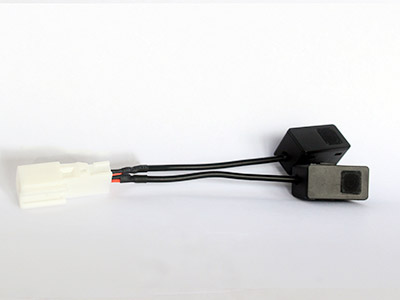Welcome to Dongguan Huaze Electronic Technology Co., Ltd. official website
- +86-769-87900688
- Chinese
WeChat

Welcome to Dongguan Huaze Electronic Technology Co., Ltd. official website


General indicators of microphones:
1. Sensitivity (Sensitivity is generally defined as: the efficiency of the microphone's acoustic-electric conversion. It is expressed in dB. It is set to 0dB=1V in the relevant microphone test standards, so the sensitivity values of the microphones are all negative values. For example:- The sensitivity of a 58dB microphone is generally selected between -28 and 66 dB, and different applications have different sensitivity requirements. For example, the sensitivity value of a notebook computer is relatively high, which should be around -27db, while Bluetooth headsets It is relatively low, as long as -62db or so is fine.
It must be mentioned that the sensitivity of the microphone is not only determined by the sensitivity of the microphone itself, but also related to the resistance R in the circuit. The size of this resistance directly affects the sensitivity of the microphone. For the same microphone, if different R values are used, the sensitivity is completely different. For example: when the R value is 1k and 2k, the difference in sensitivity can be nearly 7db! Therefore, the sensitivity is conditional. The microphone manufacturer generally has to set the test conditions, usually: 2.2k, 3v.
2, frequency response
Generally defined as: the consistent state of the sensitivity of the microphone at each frequency point in the audio transmission. The frequency response range of the microphone is called 20-20khz. It is generally believed that the more consistent this consistency is, the flatter the entire frequency response curve, the better. But this is not the case in actual use. For example, in a telephone, it is hoped that the frequency response curve of the microphone is a haystack-shaped decapitation. In this way, low frequency noise and howling can be overcome to the greatest extent. The microphone in the aviation earmark is required to cut the components below 700hz to avoid the low-frequency noise frequency of the aircraft engine. In general conference sound, it is hoped to reduce the frequency above 4000hz to overcome howling.
In ultrasonic transmission, the microphone is required to have a frequency response of 15khz or more and the higher the sensitivity, the better. Therefore, the frequency response of the microphone should also vary depending on the use.

3. Current and impedance
There is a field effect transistor inside the microphone, its function is impedance conversion and signal amplification, so a DC voltage must be added to the microphone to work, which can be selected between 1.5--6v. The current value of the microphone normally depends on the current value of the FET (Field Effect Tube). Generally between 0.15-0.5mA. Here, the FET is a constant current source, and the current value is basically unchanged when the external voltage and resistance of the microphone change. Therefore, we can consider the current value of the microphone to be the current value of the FET. The FET current value is related to its own amplification gain index, that is, the transconductance (equivalent to the amplification factor of the transistor) and its own impedance value. It is generally believed that within a certain range, the greater the normal current value of the microphone, the lower the impedance, the higher the amplification capability, and the higher the sensitivity of the microphone.
The impedance of the microphone is generally calibrated by the manufacturer as: 2.2k. In fact, the impedance of the microphone is a range value, not a point value. In practice, the impedance of the microphone is between 700 ohms and 3000 ohms. It is actually wrong for many users to measure the impedance with a multimeter. What the multimeter measures is only the DC resistance of the microphone FET.
The impedance value of the microphone not only affects the sensitivity of the microphone itself, but more importantly, it affects the indicators of the electrical appliance that uses the microphone. That is, the output impedance of the microphone must be the same as the amplifier of the electrical appliance that uses the microphone. Only when the input impedance is matched can the maximum sound transmission gain be obtained.
4. The generation and overcoming of noise
The noise of the microphone is divided into its own local noise and external interference noise. Because the current value of the field effect tube of the microphone is very small, the local noise is already very small. Poor grounding and poor packaging of the metal shell are the main sources of noise. Especially in high-frequency devices such as mobile phones, when the contact resistance between the microphone shell and the PCB board is greater than 1 ohm, significant high-frequency modulation interference will occur, that is, the so-called current sound and mosquito noise. See the article on how to overcome it.
5. How to use a microphone with a mobile phone
6. How to use a microphone with a Bluetooth headset
Bluetooth headset is a wireless communication product launched in recent years. The general manufacturer purchases the Bluetooth core module and then assembles the peripherals. The gain of the Bluetooth headset module chip is very high, so the sensitivity of the microphone is not high, and it is basically at the lower limit of the sensitivity distribution. Due to the small size of the Bluetooth headset, it is difficult to optimize the acoustic structure. If the sensitivity of the microphone is too high, it is easy to produce echo. Recommended sensitivity: -62--66db
7. How to use a microphone with a PC machine
The earmark of a personal computer uses a microphone. Computers and Bluetooth are on the contrary, the gain of the sound card is very low, and the soft sound card is even worse. Therefore, the sensitivity of the computer microphone is relatively high, which is at the upper limit of the distribution. Recommended sensitivity: about -50db. Most notebook computers have higher sensitivity requirements for microphones -45-47db.
+86-769-87900688
Address:Building B, No. 6, Xingyuan Road, Yuquan Industrial Zone, Fenggang Town, Dongguan City


Mobile station
No public
Applets